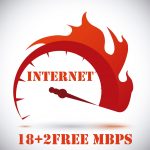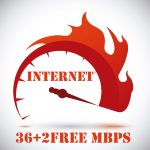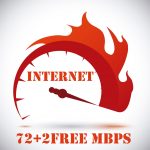- NLOS (Non-Line-of-Sight) Challenges
In the license-exempt and lightly-licensed fixed wireless broadband space, operators must live with the modest power limits set by regulators. Whether in the USA, Canada, are anywhere else, regulatory regions require wireless technology in these frequency bands we are permitted to use to operate at greatly reduced power relative to those operators like mobile carriers who hold expensive licensed bands. The reasons for this go back many years, but the crux of the issue is that these bands were never expected to support commercial broadband plays, but rather were expected to be used by all the common indoor and very close range wireless devices that have become pervasive in our lives today, such as Wi-Fi, baby monitors, garage door openers, etc. The exceptions include 3.x GHz bands, but even these are granted very limited output power for fear of interfering with adjacent license band licensees like satcom companies. Despite this, technologists have been able to make lemonade out of lemons, and now thousands of operators around the world are serving millions of customers around the world – especially in rural areas where choices are few – with community-saving high speed internet. But common technologies like Wi-Fi and its proprietary derivatives can only do so much; Wi-Fi capabilities are modest when it comes to outdoor obstructions like trees. The result is that areas with lovely forests (and even a few trees in a wireless path), while nice to live around have been impossible to service with any kind of broadband speeds today’s streaming users demand. You see (again, this will be remedial for some of you),
wireless signals weaken over distance – a process called “attenuation.” This attenuation occurs in a step-like manner, where enough attenuation means the signal drops to progressively lower and lower levels, with each level down reducing the ability of the signal to deliver less and less speed (megabits). These levels are called “modulations.” Top modulations might be able to deliver 80 megabits or more, but by the time distance and trees continue to attenuate the signal, one might be in a modulation that can only deliver 1 or 2 Mbps, and eventually nothing at all. With trees in the way, low power signals are both scattered (reflection) and absorbed by leaves, modulating the signal down to useless levels. In the wireless business we categorize this sort of radio path obstruction as a foliage-related non-line-of-sight problem (NLOS). Tree-based NLOS is the primary reason keeping most WISPs from being able to connect a majority of the customers in their footprint who want their service; it is a massive business problem, not just a technical one. Those who can beat NLOS — or at least deal with it much more effectively — win in the marketplace.
In the wireless world we measure these signal levels in decibels (dB). The way the science works, -3 dB attenuation (loss) means you’ve lost half your power. Conversely, +3 dB (gain) means your power is double. And it’s exponential, so a loss of 6 dB is catastrophic in terms of delivering effective high speed internet. To use an analogy, imagine you are driving down the interstate at 80 mph. If you lost half your power (3dB), you are down to running at 40 mph. Lose another 3 dB (or 6 dB total) and now you are down to 20 mph. So in the wireless world, we might say 80 mph is like 80 dB, but 77 dB is like 40 mph and 74 dB is like 20 mph. That’s not going to get you anywhere fast – and your competitor still driving 80 will crush you in the market if your job is to delivers goods down the highway. And guess what? Your job IS to deliver “goods” down the “highway” – broadband down the information superhighway.
This is where LTE comes in. Unlike Wi-Fi, LTE was designed for outdoor wireless, not indoor wireless local networks. As a more advanced technology designed specifically for outdoors, LTE signals are able to hold higher modulation levels in the face of more foliage. LTE also does a better job of collecting all the various reflections off leaves and still making sense of the signal.
LTE does such a better job in fact that it holds about a 7 dB advantage over Wi-Fi on a per modulation basis — remember that’s more than double and double again. With that massive advantage it can easily cope with foliage-based NLOS that will literally render competitive technologies useless, unable to connect. WiFires LTE lets you deliver much higher speeds to your NLOS-impacted customers where your competitors maybe can’t service them at all. This means many more potential customers for every tower you install.
- Standards
The NLOS benefits alone are enough to drive most fixed wireless operators delivering broadband commercially to move to LTE if they deal with foliage-based NLOS, but there is another reason why such users should care a lot about LTE: standards. This is also a reason cities and towns, must care about it. We are all carrying LTE-enabled devices in our purses and pockets. LTE, in just a few short years, has displaced all other old school mobile technologies. When you see that “4G” icon appear on your smart phone, that’s LTE. The mobile operators have invested billions to upgrade their networks to LTE because it gives them much more speed at distances the old 3G methods could deliver. But that’s not the only reason, the global drive for all mobile carriers to use LTE for its technological advantages also means the entire globe is unifying around a single standard. It’s an explosion in innovation. Just consider the amount of Wi-Fi prompted revolutionary innovations for what and how we can connect things inside just over the space of ½ a generation. We can’t imagine living with it, just ask your kids!






